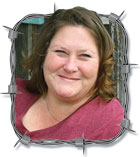Football season is kind of a big deal at my house. I enjoy watching the Kansas City Chiefs, but I have things to do other to than plan my Sunday afternoon around which team is playing and when the games come on. Bill, on the other hand, is a superfan.
Every Sunday, I hear, “Jules! What network is this?” “Jules! What time is it on the East Coast?”
Bill starts planning his football season menu this time of year. It’s usually things like smoked jalapeno poppers wrapped in bacon, burgers, brats, pulled pork, ribeyes, pizza, chicken wings, ribs, chili, cheese sticks and nachos. You won’t, however, find a veggie tray. Before I go to the store each week during the football season, I ask Bill what he wants for the weekend, but there always seems to be a trip back on Sunday morning for something. I have to remind him it’s just the two of us, so there will be no buffet to graze upon all day.
Football and food go together, and if it weren’t for farmers and ranchers, football wouldn’t be the same. Humans would still be nomadic hunter/gatherers without agriculture. There’s no time to play or watch games when it’s a struggle to survive.
The tie between football and agriculture goes beyond food. Most folks have heard the football called the “ol’ pigskin,” but early balls, much like the ones used in early rugby and soccer games, were more oval and were made from animal bladders. Historical accounts said an animal bladder, more than likely a pig bladder, was inflated and placed inside a pigskin covering, and the “pigskin” was born.
I know necessity is the mother of invention, but how does using a pig bladder to make a ball even come up in conversation? You know there were no air compressors back then, so someone had to blow it up. Was it a dare between a couple of buddies hitting the mead a little hard, or did someone blow one up to see what happened?
I don’t think the typical American realizes how essential agriculture is. Agriculture is all around us, and it’s not just food. Nearly everything wear comes from an animal or a plant. Many manufactured fibers like rayon are made from cellulose polymers found in cotton, wool, hemp or flax, which come from farms. Then there is the whole “what’s made from animals” list.
Many anti-agriculture folks follow a vegan or vegetarian diet with fake meat and non-dairy milk. Farmers are still needed to grow the plant-based products used in producing the “meat substitutes,” and grow and harvest the almonds, oats or soy used in non-dairy “milk.”
Kind blows their “farmers are bad” motto right out of the window.
I watched a rerun of my favorite T.V. show the other night that showed the disconnect many people have with agriculture. One of the main characters asked a not-so-welcome guest if she liked wheatgrass, which the guest said she did. The main character said they had a whole field of it. The guest touted it wasn’t the same wheatgrass. Let’s say the guest got a little ag education; it was an excellent speech.
I hope one day, everyone will truly understand that the real professionals in this world are the farmers and ranchers who make life as we know it possible.
In the game of life, if the farmers and ranchers lose, we all lose.
Julie Turner-Crawford is a native of Dallas County, Mo., where she grew up on her family’s farm. She is a graduate of Missouri State University. To contact Julie, call 1-866-532-1960 or by email at [email protected].






